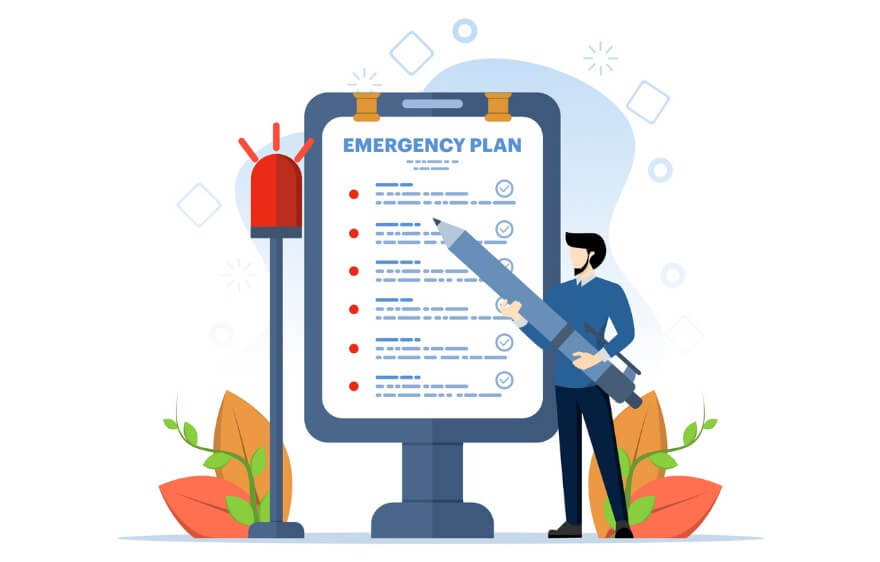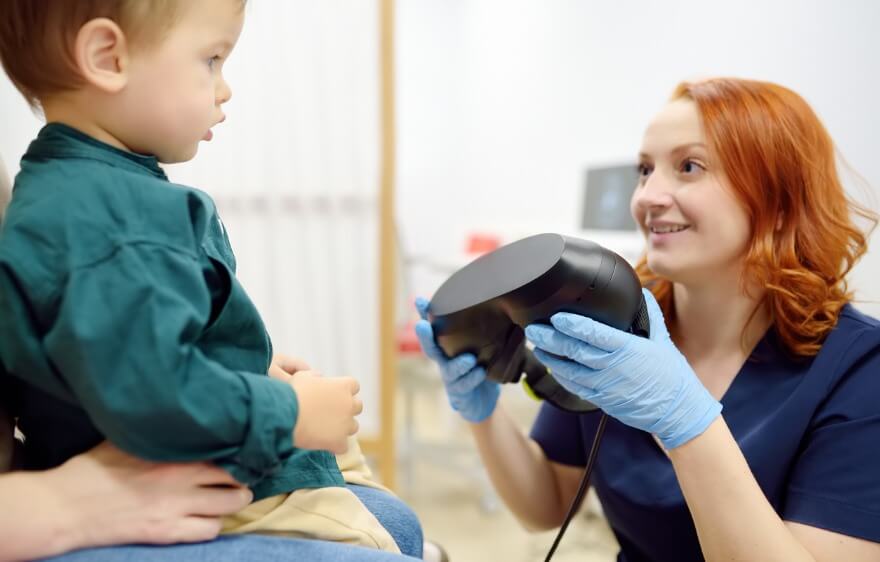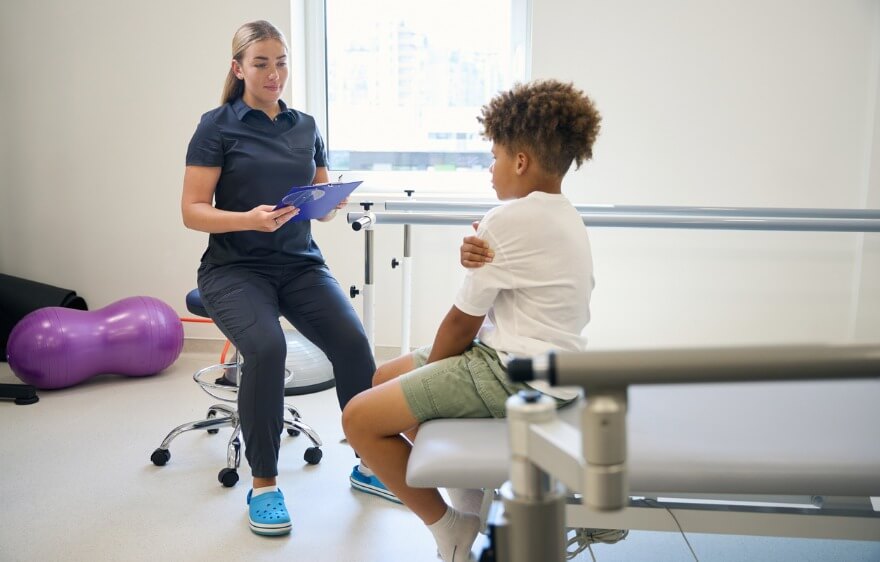For families managing complex medical needs, daily life already involves careful planning and an extraordinary level of attention. But as we move into a season with an increased chance of severe weather events — including hurricanes, tornadoes, and intense thunderstorms — it can add a whole extra layer of uncertainty and stress.
You’re not just thinking about your own safety, you’re also thinking about vital medical equipment, medications, access to healthcare, and your child or loved one’s comfort and stability in a crisis.
At Care Options for Kids, we’re dedicated to ensuring all families feel supported with the guidance to stay safe and healthy during what is often a nerve-wracking time of year. That’s why we’re sharing this guide with region-specific preparedness strategies, tips for navigating disruptions, and links to trusted readiness resources to help you weather the storm with as much peace of mind as possible.
General Preparedness Tips for Severe Weather
Whether your family is facing a fast-moving tornado, a slow-building hurricane, or a sudden severe thunderstorm, solid preparation can make all the difference, especially when you have complex care needs. The following severe weather preparation tips apply no matter where you live and are designed to help you stay ready, calm, and confident in any weather emergency.
1. Create a Comprehensive Emergency Plan
Start by creating a basic response plan that helps you think through everything you will need to cover in the event of an emergency.
- Include details about your child’s diagnosis, medications, equipment, and emergency protocols.
- Share your plan with family, caregivers, and neighbors.
- Practice evacuation or shelter-in-place scenarios.
2. Assemble a Medical Emergency Kit
During storm season, or any time you know there will be an increased risk of a weather emergency, it’s critical to have emergency supplies readily available and in a safe location.
- Pack at least seven to 10 days’ worth of medications, medical supplies, batteries, and backups.
- Include feeding supplies, hygiene items, chargers, and printed medical documents.
3. Secure Backup Power Options
Many care plans rely on electricity, which makes emergency power a key priority.
- Invest in portable power stations or generators if your child relies on electricity-dependent devices such as a ventilator.
- Register with your utility provider’s medical needs registry for power restoration prioritization.
4. Communication Is Critical
In high-stakes situations, it pays to have contacts and communication needs already lined up.
- Keep a list of emergency contacts, including specialists and durable medical equipment (DME) suppliers.
- Sign up for local emergency alerts via text, email, or app-based notifications.
5. Coordinate With Your Child’s Medical Team
Ensure you have a plan in place for managing your child’s health during an emergency.
- Ask about emergency dosing instructions, alternative treatments, and how to contact your provider if access is disrupted.
- Request extra prescriptions or supplies, if possible, in case of evacuation or supply chain delays.
- Keep a written summary of your child’s medical conditions and treatments in your emergency kit.
6. Locate Special Needs Shelters in Advance
Know where to go if evacuation becomes necessary and standard shelters aren’t equipped for medical needs.
- Contact your local health department or the Red Cross to find accessible or medical-friendly shelters.
- Pre-register with special needs shelters if your community offers this service.
- Verify whether the shelter can accommodate any medical equipment or power needs your child may have.
Tips for Tornado-Prone Areas
If you live in Tornado Alley, or any region with a high risk of tornadoes, you know that tornadoes can strike with little warning and move quickly. For families with complex medical needs, preparation is critical to safety and health.
Here are some key tornado-specific preparation tips:
- Designate a safe space: Identify the most storm-resistant room in your home, generally a basement or windowless interior room. Ensure it’s accessible for wheelchairs or medical beds if needed.
- Pre-stage medical supplies: Keep a bin with emergency items in your shelter space so you’re not scrambling when sirens go off.
- Have wearable medical alert IDs: In the chaos of a tornado, these help first responders identify your child’s needs quickly.
- Have portable nebulizers or oxygen ready: Use battery-operated or manually-powered backups if sheltering without power.
For the most up-to-date information and the current tornado outlook near you, visit the National Weather Service Tornado Safety website.
Tips for Hurricane-Prone Areas
Compared to tornadoes, hurricanes typically allow families more lead time, but they can also bring more widespread and longer-lasting disruptions. If you live in a high-risk area for hurricanes, including the Gulf Coast and along the Eastern Seaboard, you should keep the following tips in mind:
- Pre-evacuation planning: Know your evacuation zone and route, and contact your county emergency management office to pre-register for medical needs shelters.
- DME and pharmacy coordination: Ask suppliers about shipping to alternate locations and always try to refill prescriptions early — some states authorize emergency refills before storms.
- Keep ice packs and cold storage for medications: If you evacuate or lose power, keep meds at proper temperatures.
To learn more, visit the hurricane resources page on Ready.gov, the official disaster preparedness site of the Federal Government.
Tips for Areas Prone to Severe Thunderstorms
Thunderstorms may not always make headlines, but they can cause dangerous power outages and flash flooding that can have a severe impact on children and families with ongoing medical needs. During bouts of potentially severe thunderstorms, always do the following:
- Monitor local weather apps: Storms can intensify rapidly; stay updated via apps like FEMA, The Weather Channel, or local news.
- Unplug equipment during lightning: Use surge protectors and keep backups ready in case of damage.
- Flood Safety: Avoid sheltering in basements if there’s flood risk, and keep essential supplies on elevated surfaces if flooding is a concern.
For region-specific information, check out the severe weather page on Ready.gov.
Supporting Your Child Emotionally
Children, especially little ones with sensory sensitivities, communication challenges, or anxiety, may struggle with sudden changes or frightening weather.
- Create a social story or visual schedule for emergency plans.
- Use noise-canceling headphones to reduce stress during storms.
- Bring comfort items during evacuation or sheltering, such as a favorite toy, weighted blanket, or communication device.
Emergencies are difficult for every family — but when your child depends on technology, medications, or complex care routines, that difficulty multiplies. Know this: you are not alone. With planning, collaboration, and support from your community and care team, you can take proactive steps to protect your child’s safety and well-being. Start with small, manageable actions today. Preparedness is a process, not perfection.
Above all, stay safe and stay prepared. You’ve got this.
Schedule Your Child’s Care Assessment Today
At Care Options for Kids, we understand the unique challenges of caring for a child with basic to medically complex health conditions. Our dedicated team of pediatric home health care nurses is here to support your family with compassionate, expert care tailored to your child’s needs. Contact us today to schedule an assessment and learn how we can help you navigate this journey with confidence and care.
Click here to start your journey to better care.






